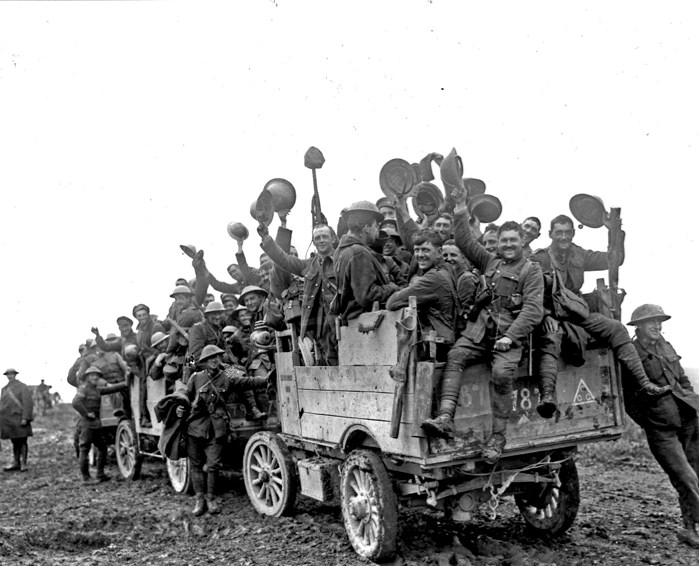This year marks the 100th anniversary of the Battle of the Somme – a five- month campaign that started on July 1, 1 1916, involving predominantly French and British troops, but also many Canadians across a front line that bordered the River Somme in northern France and stretched for 25 kilometres.
The campaign witnessed the deaths of Innisfail men Pte. Gregory Bryan, 21, of the Royal Canadian Regiment and Pte. Alfred Edmund Forshaw, 31, of the Canadian Infantry – Alberta Regiment. Both men were in combat on the 77th day of the Somme Offensive at the Battle of Flers/Courcelette. They are buried in the British War Cemetery at Courcelette, France. Both are on the Innisfail Roll of Honour – WWI.
The scale of the fighting and the loss of life during the many battles of the Somme campaign were unbelievably appalling and incomprehensible for many of our generation today. Commonwealth forces (in this campaign alone) suffered more than 650,000 casualties, including some 200,000 who lost their lives (this is excluding German losses). Canadian losses would make up more than 24,000 soldiers of that total, either killed or wounded.
By the end of the first day of fighting the British Army had about 60,000 casualties, of which almost 20,000 were killed. In addition, the French Army suffered around 1,600 casualties and the German Army about 11,000 casualties. Little wonder that this day is known as the “worst day” in the history of the British Army.
The Royal Newfoundland Regiment who fought at the village of Beaumont-Hamel suffered losses of 700 men on that first day of the Somme offensive – their starting strength was 900 the day before. After the first day the divisional commander was to write of the Newfoundlanders' effort, "It was a magnificent display of trained and disciplined valour, and its assault failed of success because dead men can advance no further”. This day (July 1st) is commemorated each year in Newfoundland and is known as Memorial Day.
These moving words, taken from the Wall of Remembrance at the Somme memorial, are testament to those who fell there:
As day breaks through wind and rain we form a line on rough terrain, to face a foe we'll never know, we will fall and die where poppies now grow. Remember us the chosen ones, the lads the dads and someone's sons. Be not sad, just be glad, knowing we gave all we had. As you walk on our ?elds of doom, places where our bodies were strewn, we will gaze on you through heaven's door and hope our words stay for evermore. When you leave save a tear, for here we stay year on year, the lads the dads and someone's sons, the boys who fell before German guns.
On Nov. 19, 1916, the Somme offensive was brought to an end due to bad weather. The Great War would, however, continue on for another two years. The “war to end all wars” was merely a notion -- no more than an unattainable and fanciful hope as history would further repeat itself in many more conflicts around the world in years to come.
This year an international Service of Remembrance, hosted by the French and United Kingdom governments, took place at the Thiepval Monument on July 1. From July 2 a daily service is being held to remember the sacrifice of all individuals and communities over the subsequent 139 days of the battle ending with a final Service of Thanksgiving on Nov. 18.
For years after this battle (and even today 100 years on) the farmers' fields continue to reveal many human remains amongst the poppies and the cornflowers that continue to grow wildly in the fields of the Somme province.
Since the end of the First World War the cornflower (the bleuet de France) is the symbol of memory and remembrance in France. The British poppy, the French bleuet and the Canadian poppy – are all different in appearance, but together uniform, as a means of respecting the fallen and commemorating those who suffered and those who gave their lives.
Earlier this year Branch 104 held a service at the Innisfail Cemetery in memory of Robert Earl Anger, a veteran of the Vimy Ridge campaign in 1917. During that service a special wreath was laid on behalf of the Royal British Legion. Interspersed with the red poppies are the blue cornflowers of Remembrance. This special “Somme 100” commemorative wreath is on display in our branch today.
Arno Glover is the manager of the Innisfail Royal Canadian Legion.

